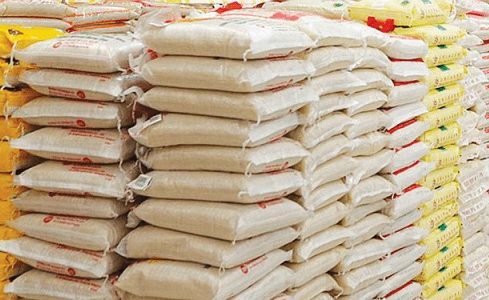Rice millers in the country are sounding the alarm, highlighting a shortage of paddy, the raw material for rice production. In a plea to the federal government, millers are calling for urgent intervention to address the scarcity and ensure the continued viability of the rice production industry.
The Infosride news delves into the concerns raised by rice millers, the potential consequences of a paddy shortage, and the implications for the broader agricultural and economic landscape.
**Plea for Government Intervention:**
Rice millers are urging the federal government to intervene in response to the shortage of paddy, a critical component in rice production. The call for government action reflects the seriousness of the situation and the recognition that timely intervention is essential to prevent adverse effects on the rice industry and the economy at large.

Supply Chain Disruptions:
The reported shortage of paddy points to disruptions in the rice production supply chain. Factors such as adverse weather conditions, pest infestations, or fluctuations in planting patterns may contribute to reduced yields and, consequently, a scarcity of paddy. Understanding the root causes of the supply chain disruptions is crucial in devising effective and targeted interventions.
Impact on Rice Production:
The shortage of paddy has direct implications for rice production, a staple in the country. Rice millers, who play a pivotal role in processing paddy into the final product, face challenges in maintaining regular production levels. A reduction in the availability of paddy can lead to decreased rice output, potentially resulting in market shortages, increased prices, and implications for food security.
Economic Ramifications:
The shortage of paddy extends beyond the rice production sector, with broader economic ramifications. Rice is a staple food for a significant portion of the population, and any disruption in its supply can affect consumers, businesses, and the overall inflationary landscape. Additionally, the economic activities associated with rice production, including employment in the agricultural and processing sectors, may be impacted by the paddy shortage.
Addressing Root Causes:
To effectively address the paddy shortage, it is essential to identify and address the root causes of disruptions in the supply chain. This may involve a comprehensive assessment of agricultural practices, weather patterns, pest management strategies, and other factors influencing paddy yields. Government intervention can include providing support to farmers, implementing resilient agricultural practices, and investing in research and development to enhance the overall productivity of the rice sector.
Strategic Reserves and Planning:
In addition to immediate interventions, the creation of strategic reserves and effective planning mechanisms can contribute to mitigating the impact of future paddy shortages. Developing strategies for managing and optimizing paddy stocks, implementing risk mitigation measures, and fostering collaboration between government agencies, farmers, and rice millers are essential components of a comprehensive approach to address supply chain challenges.
The Infosride’s Commitment to Agricultural Coverage:
As rice millers raise concerns about the shortage of paddy and call for government intervention, The Infosride remains committed to providing comprehensive coverage of developments in the agricultural sector. Stay tuned for updates on the government’s response, insights into the root causes of supply chain disruptions, and analyses of the broader implications for the rice industry and the national economy.
Support InfoStride News' Credible Journalism: Only credible journalism can guarantee a fair, accountable and transparent society, including democracy and government. It involves a lot of efforts and money. We need your support. Click here to Donate
